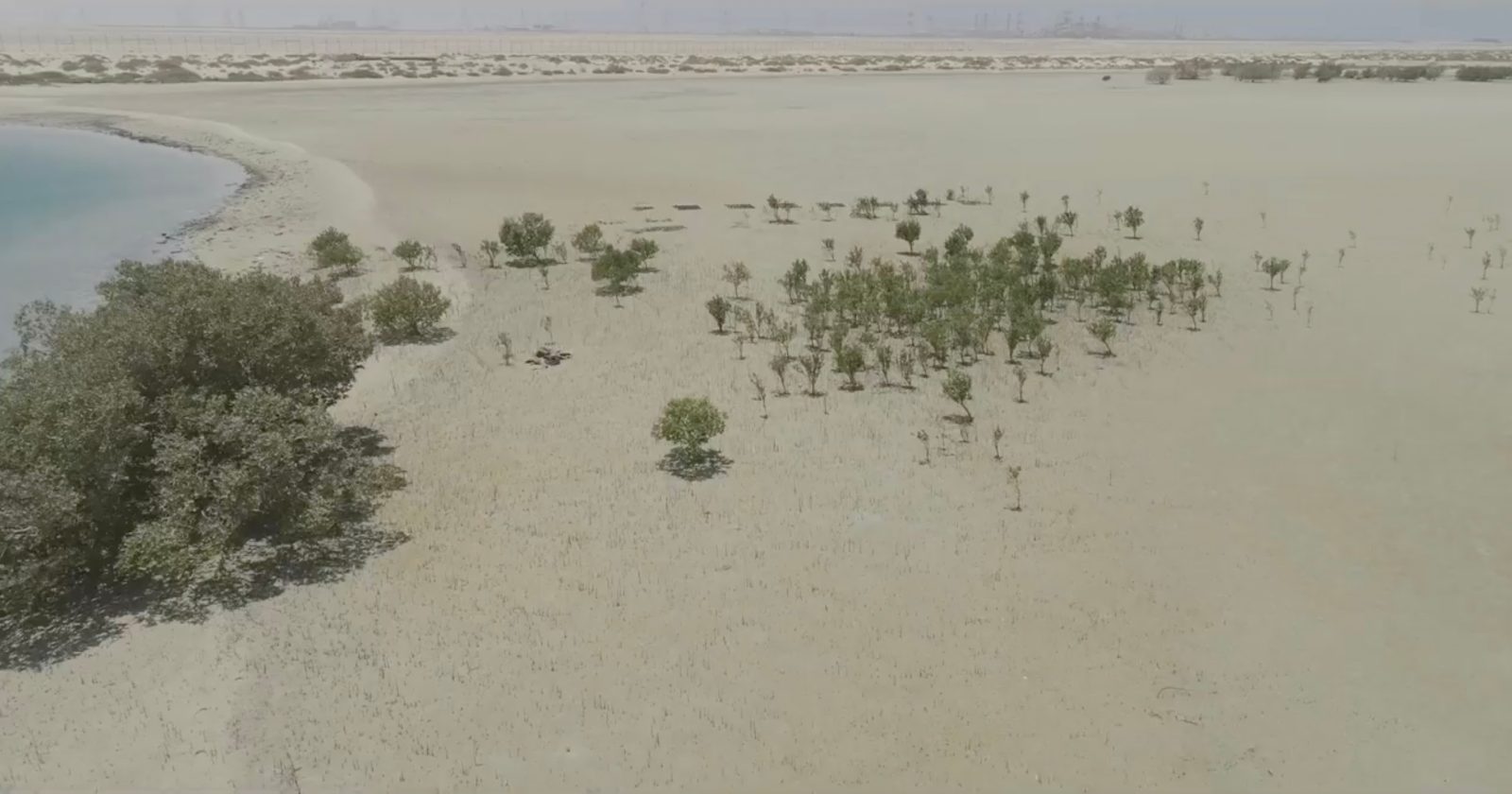
The official environmental protection agency of Abu Dhabi has teamed up with international energy company ENGIE in a large project using drones to analyze, prepare for, and carry out the aerial planting of thousands of seeds in the country’s mangrove rehabilitation project.
The Environment Agency – Abu Dhabi (EAD) launched its partnership with ENGIE in late 2020 with the first phase of their “Blue Carbon” environmental and social responsibility project. That initial effort focused on a roughly 2.5-acre area of Abu Dhabi’s Mirfa coastal lagoon, where a drone outfitted by aerial services company Digital Imagery used a tailor-made delivery system to plant mangrove seed balls. When nearly a year of monitoring the germination and growth across that area returned encouraging results, the plan recently proceeded to the second step, in which a total of 35,000 seed pods were dropped.
That massive expansion of activity required Digital Imagery to rework its eight rotor drone to enable the delivery system to quickly and accurately drop its 2,000 seed ball payload each flight. Drawing from its considerable work in surveying and analyzing the different types of terrain in readying the project, Digital Imagery was also able to devise three separate kinds of release mechanisms – each adapted to the differing soil, elevation, and tidal characteristics the plantation effort involved.
Its drone prep work also determined ideal spacing for mangrove seed balls to be dropped over different sections of terrain Abu Dhabi designated for the planting process. It also enabled geo-mapping and accurate monitoring of germination and growth rates.
The “Blue Carbon” project takes its name from the term for carbon captured by oceans and coastal ecosystems – including sea grasses, mangroves, and salt marshes – which sequester those gasses at far faster rates than forest plant life. Officials at EAD credit the effectiveness of drone tech, and its use by Digital Imagery operators, with what looks to be a successful effort to nurture accelerated mangrove growth along Abu Dhabi’s coast.
“After our success in the first phase of the project, we used a more robust and evidence-based approach from lessons learned,” EAD’s executive director of terrestrial and marine biodiversity, Ahmed Al Hashemi, told ME Construction News . “This project is extremely innovative as planting via drones is a relatively new concept, which can greatly help rehabilitate and expand mangroves in Abu Dhabi, especially in remote areas which are difficult to reach using traditional planting methods.”
Drones will continue to be used to monitor the growth and health of the mangrove planted under the effort. Over time, the craft will also be equipped with specialized sensors to measure the rate of new mangrove carbon sequestration, and the effects that have on the surrounding environment.
Photo: Digital Imagery
FTC: We use income earning auto affiliate links. More.



Comments